Few golden ages, whether the Netherlands in the 17th century, Elizabeth I’s England or Spain for a century from 1580, have had such abject beginnings as the Danish Golden Age. In 1801 the British defeated Denmark’s navy at the Battle of Copenhagen; in 1807 British ships bombarded Copenhagen itself, destroying swathes of the city and causing substantial loss of life; in 1813 the state was declared bankrupt and the following year it was stripped of Norway, after 400 years as its overlord, as punishment for its support of Napoleon, however lukewarm.
Denmark was left a country both impoverished and geographically reduced but these travails nevertheless induced a reassessment of national character and purpose. Among the leading figures were the likes of Hans Christian Andersen, the philosopher Søren Kierkegaard, the scientist Hans Christian Ørsted and the sculptor Bertel Thorvaldsen. They were accompanied by a cluster of distinctive and accomplished painters such as Christoffer Wilhelm Eckersberg, Christen Købke, and a host of others.
The period is traditionally held to have ended around 1850 with the First Schleswig War and the dissolution of the absolute monarchy. However, the organisers of the highly illuminating ‘Danish Golden Age’ at the SMK in Copenhagen (first shown at the Nationalmuseum in Sweden, and travelling to the Petit Palais in the spring) extend the timeframe to 1864, when Denmark suffered a catastrophic defeat by Prussia in the Second Schleswig War. The country’s artistic flowering therefore took place between two national disasters.
Unlike the previous generation of artists such as Thorvaldsen, Jens Juel and Nicolai Abildgaard, the Golden Age painters were less concerned with mainstream European neoclassicism and Romanticism than with discovering things afresh. Eckersberg, a hugely influential teacher at the Royal Danish Academy of Art, as well as Denmark’s best-known painter, told his students: ‘Paint whatever you wish.’ A traditional academic training was not meant to be a straitjacket.

Study of a Dead Rat (1841), Lorenz Frølich. Ny Carlsberg Glyptotek, Copenhagen
Eckersberg’s encouragement led to a startling variety of unusual subjects: as well as the standard fare of history painting and portraits, artists such as Lorenz Frølich would depict both a dead rat and a nondescript section of water-filled ditch; Wilhelm Bendz painted, with loving precision, a tumorous knee; Constantin Hansen could treat subjects from Norse mythology; Eckersberg himself made a small, enigmatic cabinet picture showing a crowd of people running past an open door, while Louis Gurlitt and Johan Thomas Lundbye reimagined the heaths of Jutland and Zealand as a sort of Danish campagna.
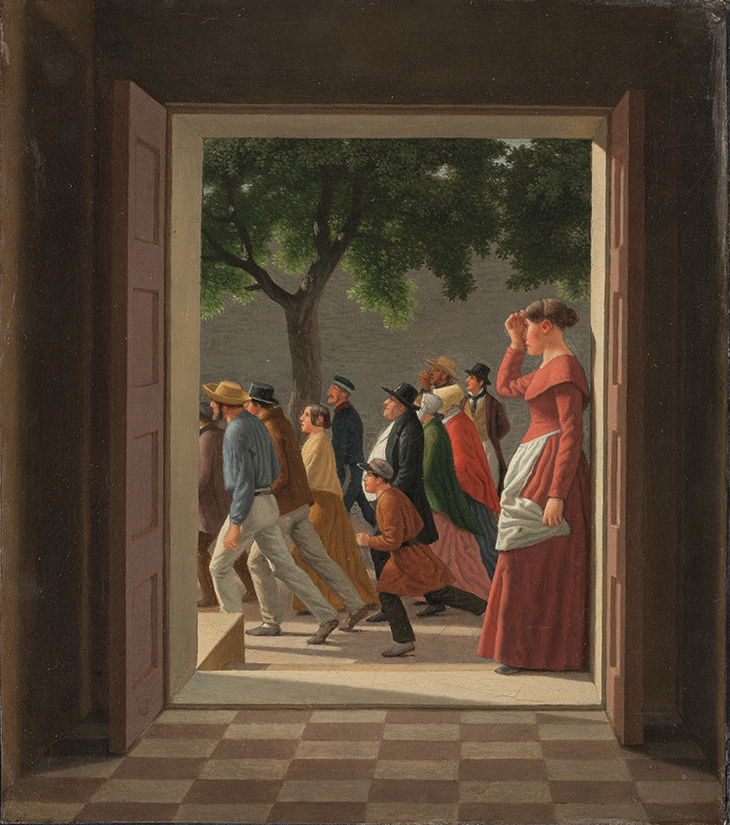
View through a Door to Running Figures (1845), C.W. Eckersberg. Statens Museum for Kunst, Copenhagen
If there is one painter who exemplifies this new spirit it is Christen Købke. The son of a military baker, Købke spent all but two years of his life in and around Copenhagen. He was a consummate painter of small, intimate portraits – most of which were of his family and immediate circle and were gifts rather than commissions – and a gently poetic recorder of the streets, lakes and fortifications of the environs. The influence of Caspar David Friedrich is clearly evident in his paintings’ geometry and sense of calm. In 1834–35, however, he painted two monumental pictures, each more than a metre and a half square, for his parents’ house. They show sections of the view from the roof of Frederiksborg Castle but are far from traditional. One is in the exhibition, the other in the SMK’s permanent collection, and both are marked by radical cropping so that the onion towers and spikes of the castle seen from close to become almost abstract shapes stabbing into the skyline, while the landscapes beyond are mellifluous and idyllic. Both pictures are bathed in soft sunlight that suggests there is absolutely nothing rotten in the state of Denmark.
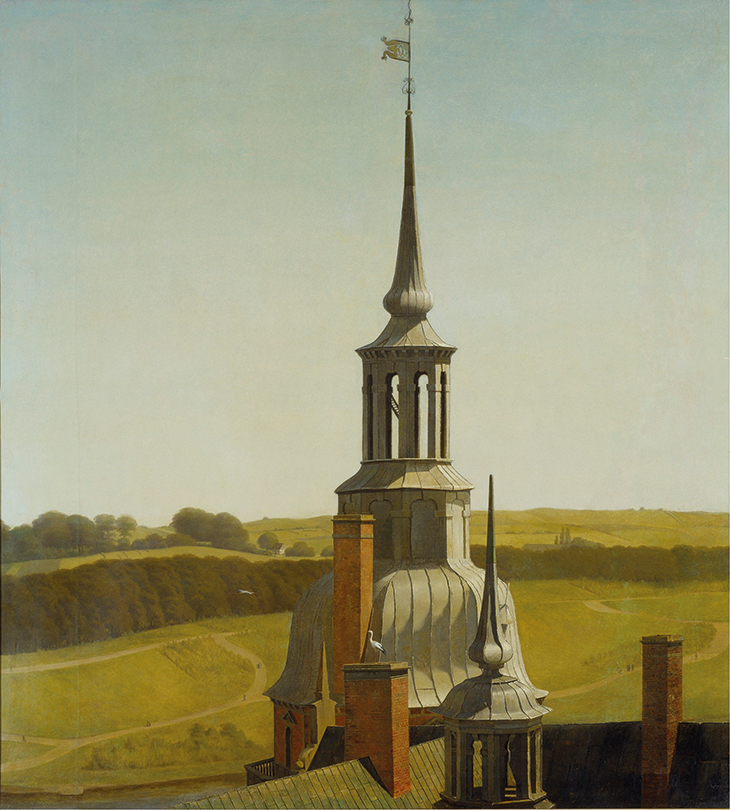
One of the Small Towers on Frederiksborg Castle (c. 1834–35), Christen Købke. Designmuseum Danmark
Købke’s first biographer claimed that the painter ‘was born without any creative imagination’ and that ‘he was empty and barren as soon as he closed his eyes’; if so, then he allied unusually heightened observation with an individual sense of composition. With these paintings, he simultaneously usurped the scale of history paintings and recast the nature of landscape painting. In doing so Købke struck out on a unique path, which he then failed to pursue when he left Denmark for a two-year sojourn in Italy.
The overriding theme of the exhibition is of an unapologetically bourgeois mentality. It was the resurgent middle class that drove the Golden Age, and it wanted paintings that reflected its taste. Many of the wider themes of Romanticism – horror, sublimity, medievalism, mysticism – barely get a look in. Although Caspar David Friedrich, Philipp Otto Runge and Johan Christian Dahl all trained at the Danish Royal Academy, the distilled soulfulness of their work is far less evident in the paintings of their Danish peers. Sunny days take precedence over stormy nights.
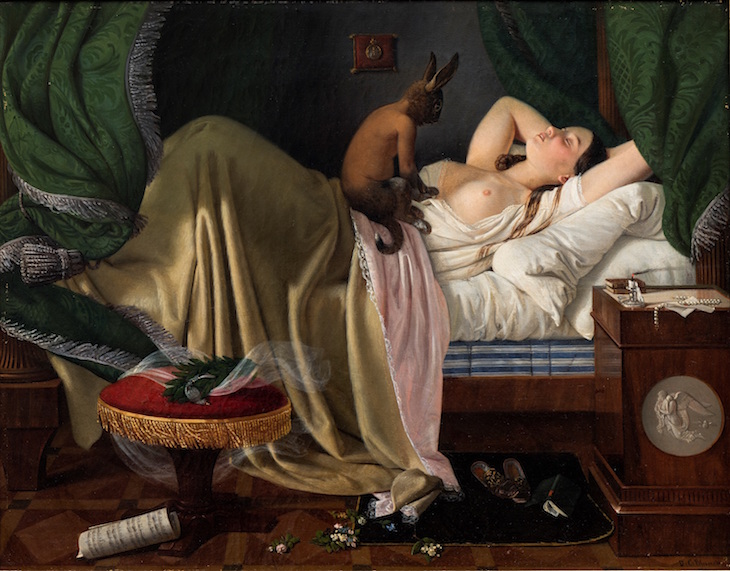
Nightmare (1846), Ditlev Blunck. Nivaagaards Malerisamling, Nivå
This taste is exemplified by Ditlev Blunck’s Nightmare of 1846, a Biedermeier transcription of Fuseli’s celebrated image. Here the girl’s bedroom is very much a boudoir still life, with sumptuous curtains, posies of flowers, a gold-fringed stool and dainty slippers. The incubus that sits on her stomach, stirring her unconscious sexuality, is no troll but a cuddly rabbit-eared creature with a cat’s tail. A bared breast and parted lips show what’s going on but the frisson of danger and the illicit that make Fuseli’s image so potent have been prettified to titillation, something closer to Boucher’s Mademoiselle O’Murphy than psycho-sexual gothic.
When in 1841 Eckersberg painted a nude woman from behind in front of a mirror the resemblance to Ingres is unmistakeable. Eckersberg’s nude, however, is intimate but decorous; stillness reigns but so does a very genteel sensuousness. The sense of the painter’s excitement that lies behind Ingres’s naked women is missing; it makes Eckersberg’s painting less charged but no less beautiful.
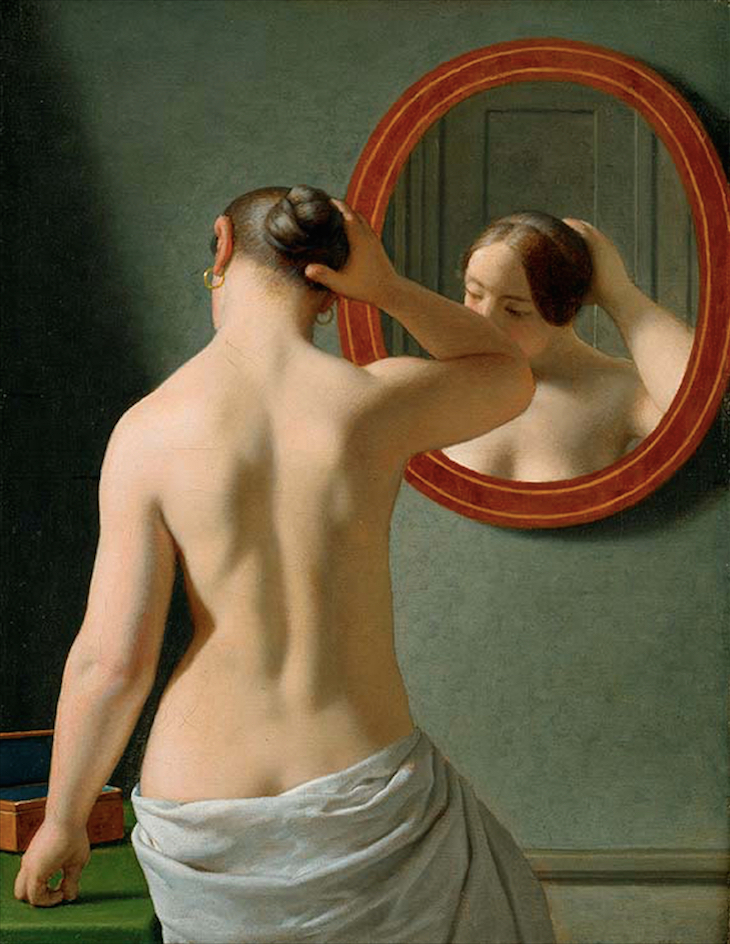
Woman Standing in Front of a Mirror (1841), Christoffer Wilhelm Eckersberg. Hirschsprung Collection, Copenhagen
One of the results of the exhibition’s extended timeframe is that it also shows how some artists such as Peter Christian Skovgaard were nostalgic about the Golden Age even before it ended. His Bleaching Linen in a Clearing (1858), for example, is an exquisitely painted image of two women, a baby and some sheets in a sunlit gap in the woods. It is a picture of peace and everyday domesticity in which nature itself is a bulwark against the rest of the world. It was not, of course, to prove impregnable. The period 1801–64, however, was itself a sort of clearing in which the country’s painters established the Danishness of Danish art.
‘Danish Golden Age: World Class Art between Disasters’ is at the Statens Museum for Kunst, Copenhagen, until 8 December.
From the October 2019 issue of Apollo. Preview and subscribe here.
Unlimited access from just $16 every 3 months
Subscribe to get unlimited and exclusive access to the top art stories, interviews and exhibition reviews.

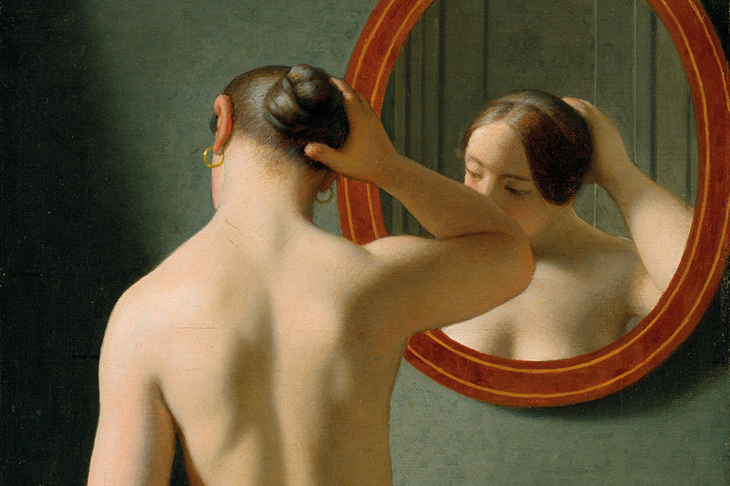
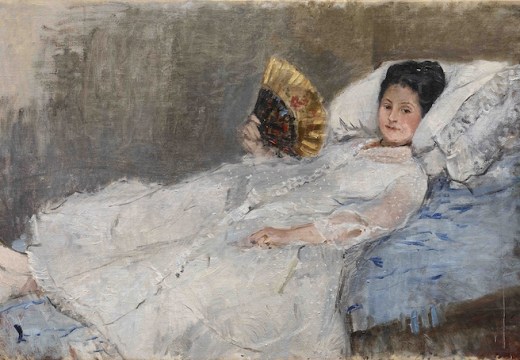
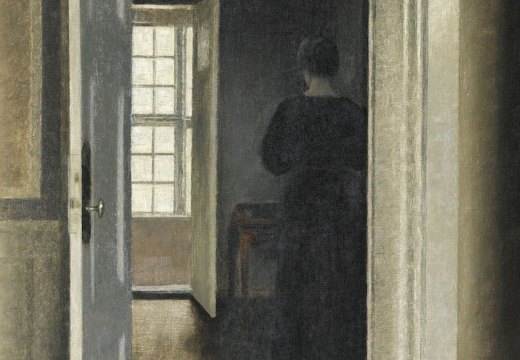
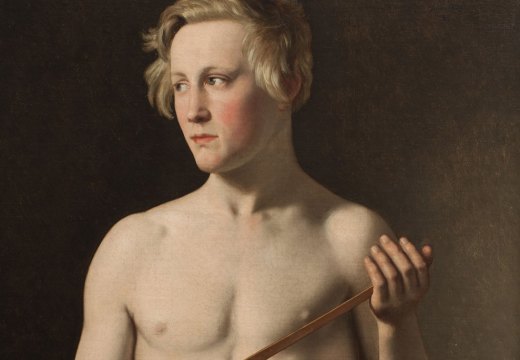









![Masterpiece [Re]discovery 2022. Photo: Ben Fisher Photography, courtesy of Masterpiece London](http://www.apollo-magazine.com/wp-content/uploads/2022/07/MPL2022_4263.jpg)
It’s time for the government of London to return to its rightful home